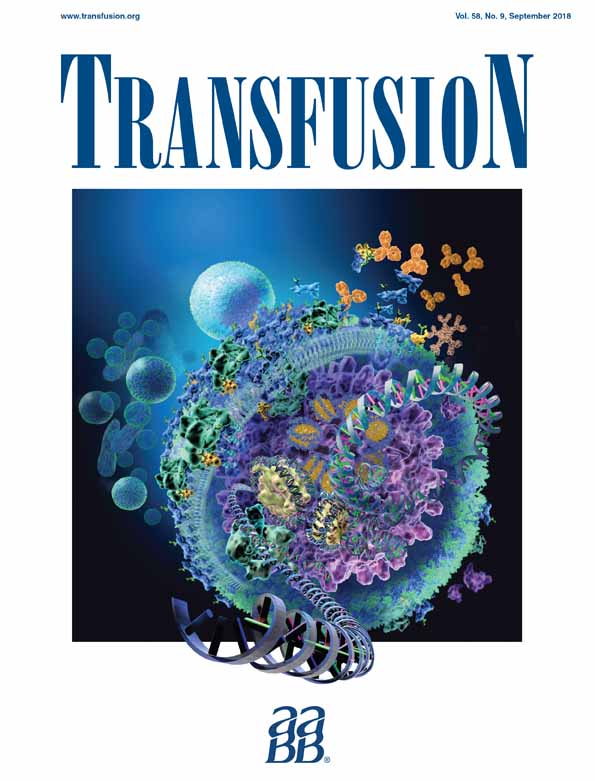Screening of red blood cells for extracellular vesicle content as a product quality indicator
RA was supported by the Saudi Arabian Cultural Bureau in Canada as a recipient of a scholarship from the Government of Saudi Arabia. We acknowledge the Canada Foundation for Innovation and the Michael Smith Foundation for Health Research for infrastructure funding at the UBC Centre for Blood Research. This research received funding support from Canadian Blood Services, funded by the federal government (Health Canada) and provincial and territorial ministries of health. The views herein do not necessarily reflect the views of the federal, provincial, or territorial governments of Canada.
Abstract
BACKGROUND
The controversy around the quality and clinical impact of stored and differentially manufactured red cell concentrates (RCCs) from different donor groups is ongoing. Current studies are limited by the lack of quality measures suitable for routine screening of RCCs. As extracellular vesicles (EVs) are markers of cellular activation or degradation, this study investigated the utility of EV screening to characterize the effects of RBCs production methods and storage.
STUDY DESIGN AND METHODS
RCCs were prepared by whole blood filtration or red blood cell (RBC) filtration methods, centrifuged to prepare a supernatant, and tested for EV content (dynamic light scattering or tunable resistive pulse-sensing techniques), hemolysis, ATP, and RBC deformability on Days 7, 21, and 42 of storage. To simulate nondestructive quality control (QC) testing, 1 RBC unit was tested in parallel with six 10-mL aliquots that were stored in small-volume containers.
RESULTS
EV content showed a linear increase with storage time (p < 0.001) and correlated with supernatant hemoglobin and inversely with ATP or RBC deformability. The method of component manufacturing influenced the characteristics of the EVs during storage. A strong correlation between both EV testing methods' measure of total EV was observed. EV content in the six aliquots were consistent at each time point but statistically higher than in the original RCCs on and after 21 days of storage.
CONCLUSIONS
EV content correlates with measures of hemolysis and other RBC quality indicators and could be implemented as a routine screening tool for nondestructive QC testing of RCCs.
CONFLICTS OF INTEREST
EMS is the founder of LightIntegra Technology, Inc., a medical device company developing the ThromboLUX system for platelet quality testing. DM is an employee of LightIntegra Technology, Inc. JPA and RA have disclosed no conflicts of interest.




